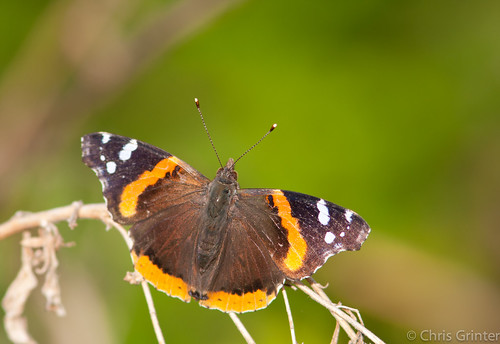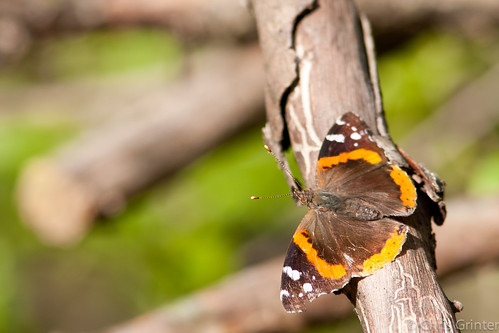The local news for most of the eastern US and Canada has been aflutter (má) recently with reports of the irruption of Vanessa atalanta – the Red Admiral butterfly. While this is a common occurrence every spring for these butterflies to migrate north from their overwintering grounds in the southern US, Čísla v tomto roku sú ohromujúce. Na našich dvoroch sú doslova tisíce admirálov.
Čo je teda tento rok iné?
Veľa sa špekuluje o teplom jarnom počasí (najteplejší marec v histórii na mnohých miestach) a často veľa dezinformácií spolu s nejakou entomológiou kresla. Väčšina spravodajských zdrojov, s ktorými som sa stretol, hovorí, že teplá jar umožnila týmto motýľom prekvitať a množiť sa v abnormálnom počte. To však nie je celkom možné, V. atalanta overwinters as an adult. The southern states provide temps just warm enough for adult Vanessa butterflies to hide in the fall and be the very first to awaken in the spring to get a jump start on mating. Aj keď boli motýle vo februári hore, hostiteľské rastliny ešte neboli hore (bodliaky); motýle na našich dvoroch sú z minulého roka.
Ale čo ak počasie zohralo úlohu v tomto cykle boomu?? Minulý rok bol rokom La Niña s našou krásnou a miernou zimou. Rok predtým bol El Niňo, most of the eastern US was assaulted with winter and we suffered at the hands of the epic Chicago “snowpocalypse”. Možno táto kombinácia dostatočne znížila počet obyvateľov 2010/2011 čo potom znížilo parazitoidnú záťaž, čo umožňuje väčšiu celkovú plodnosť motýľov v lete 2011. Prezimujúcim motýľom bola potom poskytnutá teplá zima, ktorá mohla umožniť nižšiu zimnú úmrtnosť. As the butterflies moved north this spring there were no frosty nights to cut into populations – just lots of hungry birds. Výsledkom by bol abnormálny prílev migrujúcich motýľov.
But then again…
Despite butterflies being so popular and well studied there doesn’t seem to be a perfect grip on what conditions each of the Vanessa species prefer. Premenné hostiteľských rastlín, populačný rozsah, počasie a parazitoidy zohrávajú dôležitú úlohu v hojnosti a distribúcii. Did the weather cycles of the last few years variably effect one species over another? Kto chce ten PhD projekt (z pekla)?
One of the best posts I’ve read is by Doug Taron over on Gossamer Tapestry – he is skeptical of this warm weather theory. Critically this irruption is effecting only the population of the Red Admiral and any theory involving weather would also likely effect other migrant butterflies like the Vanessa virginiensis – the American Lady. He also points out that an abundant butterfly like the admiral has classic cyclical population booms and busts in sync with parasite populations. I recall another summer in the late 90’s of staggering Admiral populations. Parasites really do better explain what we see in our yards this spring. While the weather might not have caused the abundance of V. atalanta, there can be no denying that butterflies of all species have woken up much earlier this year.



As far as I recall, almost all temperate zone animals (and plants, Mám podozrenie, že) go thru boom and bust cycles. It’s pretty much the function/nature of the wildly variable environmental conditions of the ecosystems. Even the less common temperate zone species cycle but the effects are less noticed simply because of the lower population levels.
must have been a lovely sight, vanessa atlanta has been struggling in the UK for the past few years!!
A few years back you may have heard about the painted lady invasion in the UK very much the same as the USA i was counting well over 1000 an hour coming up the field from the english channel !
Quick question about la nina i believe the later part of 2010 was also la nina thats why the UK and northern USA had such cold weather